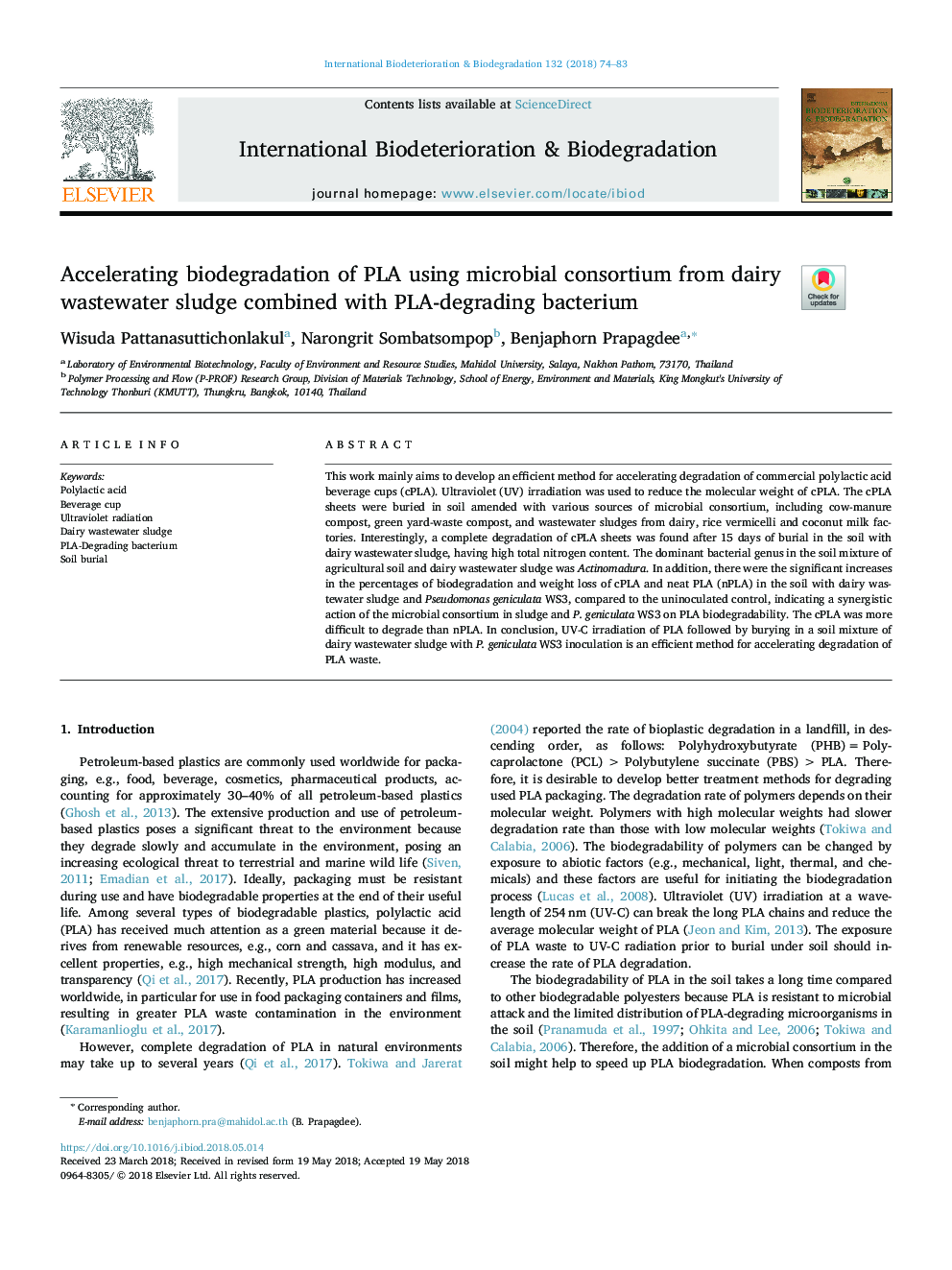| Article ID | Journal | Published Year | Pages | File Type |
|---|---|---|---|---|
| 8843736 | International Biodeterioration & Biodegradation | 2018 | 10 Pages |
Abstract
This work mainly aims to develop an efficient method for accelerating degradation of commercial polylactic acid beverage cups (cPLA). Ultraviolet (UV) irradiation was used to reduce the molecular weight of cPLA. The cPLA sheets were buried in soil amended with various sources of microbial consortium, including cow-manure compost, green yard-waste compost, and wastewater sludges from dairy, rice vermicelli and coconut milk factories. Interestingly, a complete degradation of cPLA sheets was found after 15 days of burial in the soil with dairy wastewater sludge, having high total nitrogen content. The dominant bacterial genus in the soil mixture of agricultural soil and dairy wastewater sludge was Actinomadura. In addition, there were the significant increases in the percentages of biodegradation and weight loss of cPLA and neat PLA (nPLA) in the soil with dairy wastewater sludge and Pseudomonas geniculata WS3, compared to the uninoculated control, indicating a synergistic action of the microbial consortium in sludge and P. geniculata WS3 on PLA biodegradability. The cPLA was more difficult to degrade than nPLA. In conclusion, UV-C irradiation of PLA followed by burying in a soil mixture of dairy wastewater sludge with P. geniculata WS3 inoculation is an efficient method for accelerating degradation of PLA waste.
Related Topics
Life Sciences
Environmental Science
Environmental Science (General)
Authors
Wisuda Pattanasuttichonlakul, Narongrit Sombatsompop, Benjaphorn Prapagdee,
